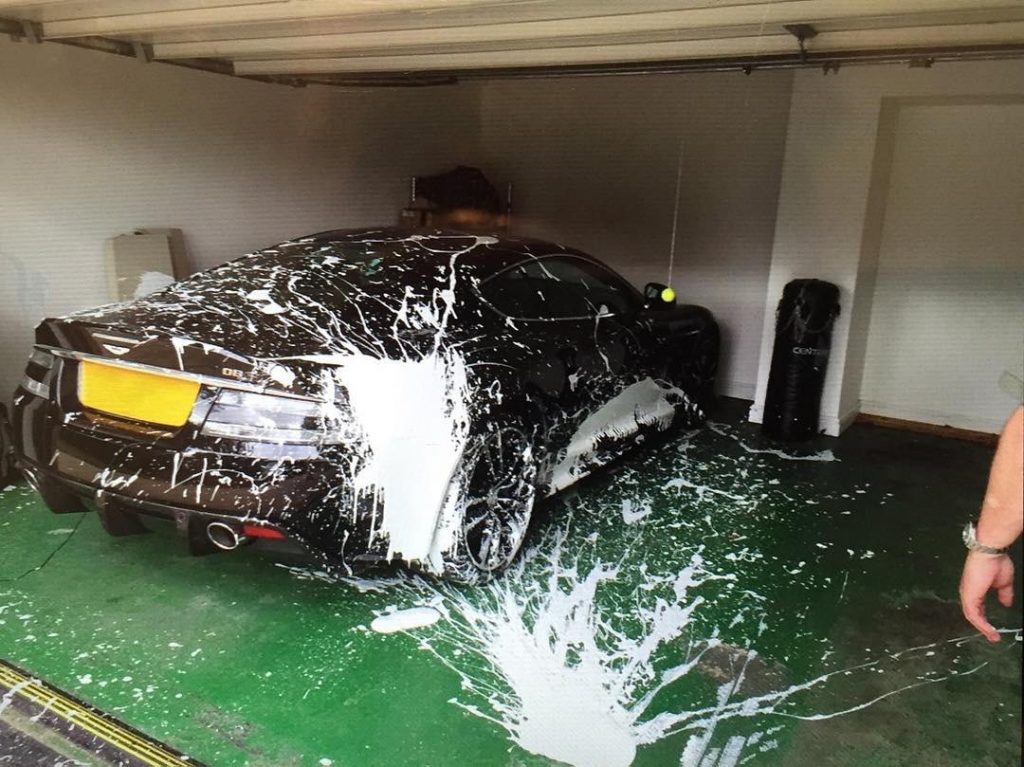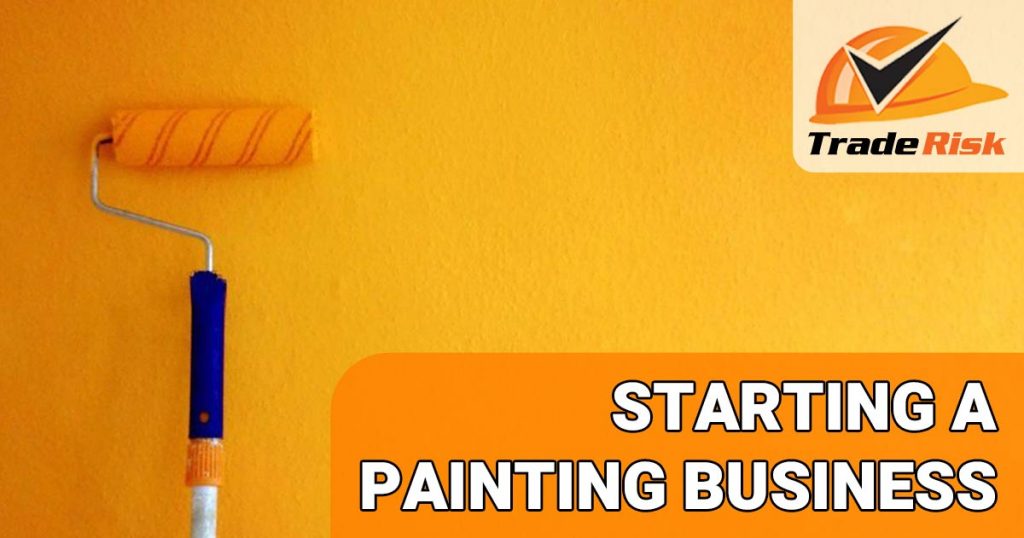For many painters, the ultimate goal is to start your own successful painting business.
Whether this is working for yourself and being content as a sole trader, or building up to a big team of painters, many of the steps to getting started are the same.
In this guide we’ll run through some of the important steps to starting your painting business.
Some of the topics we’ll be touching on include:
- Licencing
- Business Structure
- Industry Associations
- Insurance
- Legal
- Marketing
- Budgeting
Licensing
Whether or not you need a licence will depend on the type of work you’re doing, and more specifically, the value of that work.
For states which do require a painting licence you will typically find that a Certificate III in Painting and Decorating is required in order to qualify for the licence.
Queensland
If the total value of the work exceeds $3,300 (including GST) you are required to hold a licence through the QBCC.
More information: QBCC
New South Wales
If you’re undertaking work where the value of the labour and materials exceeds $5,000 (including GST) for a single job you’ll need to be licensed.
More information: Fair Trading NSW
Victoria
There does not appear to be any requirement for painters to be licenced in Victoria, however this is changing. Click here for more info.
South Australia
According to Skills Certified there is no specific painting licence in SA, however painters are required to hold a Building Work Contractors licence.
More information: SA.GOV.AU
Western Australia
If the value of any painting work you undertake is more than $1,000 you’ll need to be registered as a painting contractor.
More information: DMIRS
Tasmania
According to Licensed Trades there is no requirement for painters to be licensed in Tasmania.
More information: https://www.licensedtrades.com.au/licensed/painter
Northern Territory
According to Licensed Trades there is no requirement for painters to be licensed in the Northern Territory.
More information: https://www.licensedtrades.com.au/licensed/painter
Australian Capital Territory
According to Licensed Trades there is no requirement for painters to be licensed in the ACT.
More information: https://www.licensedtrades.com.au/licensed/painter
Business Structure
Many painters start their first business as a sole trader. It’s certainly the cheapest and easiest option, but it’s not necessarily the best.
You can register an ABN for free, register for GST if appropriate and register a business name if you’re not trading under your own name.
Getting your business structure right from the get-go is important, and there can be major consequences if you get it wrong.
The common options for starting your painting business including the following:
- Sole Trader
- Partnership
- Company
- Trust
Sole trader or partnership is the cheapest and easiest, but also provides the least amount of protection and flexibility.
Setting up as a Pty Ltd company or a trust is a little more expensive and time consuming but can also provide more protection for your personal assets, along with more flexibility in tax planning.
We have a more comprehensive article on sole trader and company structures that is worth checking out, and we also recommend speaking with a trades specialist accountant.
Accounting
After you have your business structured you’ll also need someone to look after your bookkeeping and accounting.
If you’re operating as a sole trader you can do your own bookkeeping and tax returns, but it’s worth thinking about outsourcing this so that you can concentrate on winning and completing jobs.
If you’re going with a company or trust structure you can do your own bookkeeping, but you’ll need an accountant to do your tax returns.
There are a number of cloud accounting options to help with your bookkeeping. At Trade Risk we use Xero, whilst MYOB and Quickbooks are other popular options.
Industry Associations
Although it is not mandatory to do so, you might choose to join one of the painting associations in your state.
Showing your membership of an industry association such as Master Painters can give your business a more professional and reputable look to potential clients.
We’ve put together links to the various Master Painters Associations in each state:
Insurance
It’d be easy to think that painting is a relatively low-risk trade, but accidents can happen no matter what your trade is, and they can get expensive.
Business insurance can help to protect you in the event that something does go wrong.
We have a comprehensive painters insurance guide that is worth checking out, but here’s a quick summary to get you started.
First up you’ll be wanting public liability insurance. This will be the one that protects you if you spill a tin of paint and ruin a carpeted floor, or get overspray on a nearby car and have to pay for the clean-up.
Depending on the circumstances, it might also cover you if something as wild as this happens…

It’s also a good idea to check out personal accident insurance.
This is the one that will save you if you fall off a ladder and can’t work for a couple of weeks or months.
Trade Risk can help with both public liability and personal accident, along with any other forms of business insurance you need.
Legal
Getting things sorted like your contracts, along with terms and conditions, might seem like an unnecessary expense when first starting out, but it could save you a heap in the long run.
A lawyer can help you to draft up such documents, and it could pay for itself pretty quickly if you have a job go sour in your early days as a business.
Marketing
It’s all good and well to start your painting business, but just as important is keeping your painting business going!
To do this you’ll need to be getting opportunities to quote and win jobs, and that’s where marketing comes in.
If you’ll be getting all of your work from subcontracting to builders, you might not need to worry about marketing.
In this case you’ll probably want some business card as a minimum, but websites and advertising probably aren’t a concern.
But if you’re planning on dealing direct with the public, you’ll definitely need a way for them to find you.
We’d recommend the following as a minimum:
- Logo
- Website
- Business cards
- Social media
Logo
Logos are cheap and easy to get online these days. At Trade Risk we used 99designs to design our logo back in 2010, and ten years later we still love it!
They have custom logo options for well under a thousand dollars, and in our opinion a good logo can have an impact on your business.
Website
A website for a typical painting business can be quite basic, and therefore inexpensive.
Given that so many people Google a business now before they use them, it’s definitely worth having a website that will at least show up when people Google your business name.
Business cards
Business cards are another relatively inexpensive item that can help to give your business a professional look.
The design work is relatively inexpensive, and you can typically bundle it with your logo design. Here at Trade Risk we still design our own business cards using Photoshop!
Printing costs for business cards are miniscule. We use a local printing business by the name of eprint (they also ship Australia-wide) and we’re only paying 16c per card. You can find cards even cheaper, but we like supporting Australian owned businesses!
Social media
With painting being such a visual trade, social media is a fantastic way to showcase your business.
Facebook is a good start, and we’d highly recommend Instagram.
Instagram is particularly good for painting businesses, and will enable you to showcase your work to potential clients, as well as connecting with builders who could be a good source of business.
Here are a couple of painters we follow on Instagram who are worth checking out out for some inspiration for your own account:
- @refinedpaintingprojects
- @a.r.paintingsolutions
- @tlcpaintingandwaterproofing
- @hps_painting
- @full.coverage.painting
You’ll see that some pages only share photos of their work, some share more about their personal lives and some share a mixture of both. It’s all about how you want your business to be perceived.
Budgeting
This isn’t the most exciting topic, but it could be important to ensure the viability of your business.
Here at Trade Risk we get to see the highs and lows of trade businesses, and sadly we do see a lot of businesses that shut down within their first year or two due to financial reasons.
Before starting your own painting business, it’s worth looking at your financial situation to ensure you can get through the first six to twelve months knowing that you might not be at your full earning capacity.
It’s no good spending tens of thousands of dollars on getting your van fully wrapped and having hundreds of stubby coolers made up if you then run out of money six months into the business…
More information
We recommend contacting specialists in each field as part of starting your painting business.
For accounting and business structures contact an accountant, for legal matters contact a lawyer and for business insurance, obviously contact us at Trade Risk!
We started our business over ten years ago in a spare bedroom and have grown into an award-winning company helping thousands of clients all over Australia.
We understand start-ups and small business, and we’d love to help out with your insurance.
All the best with your new painting business!




